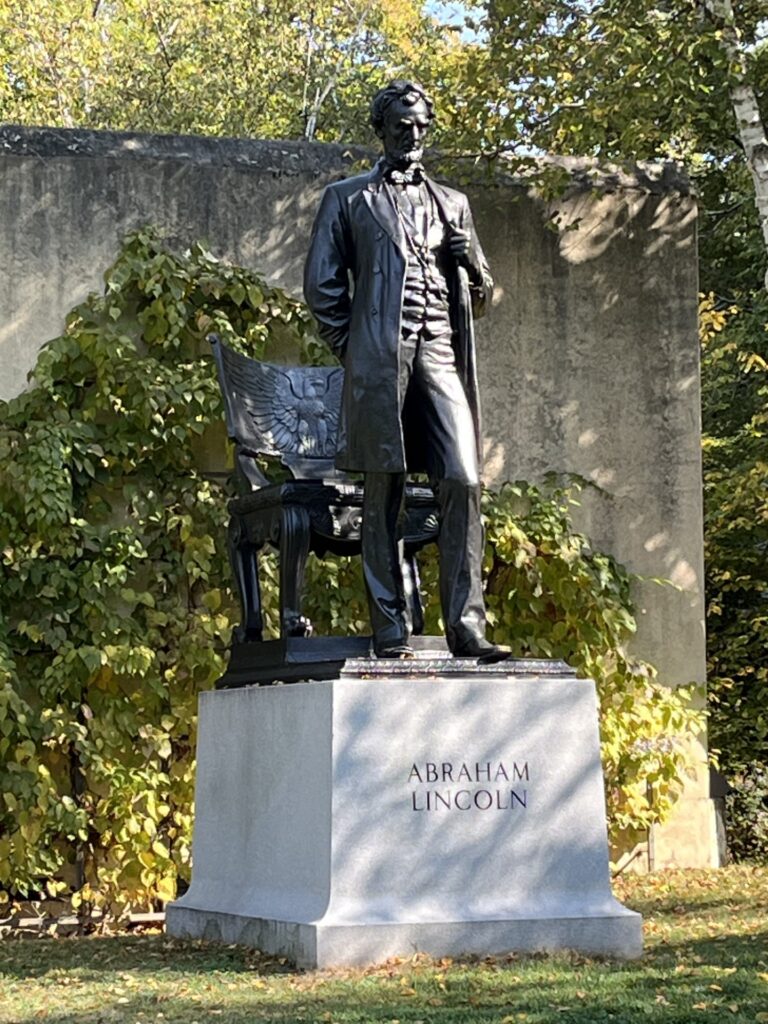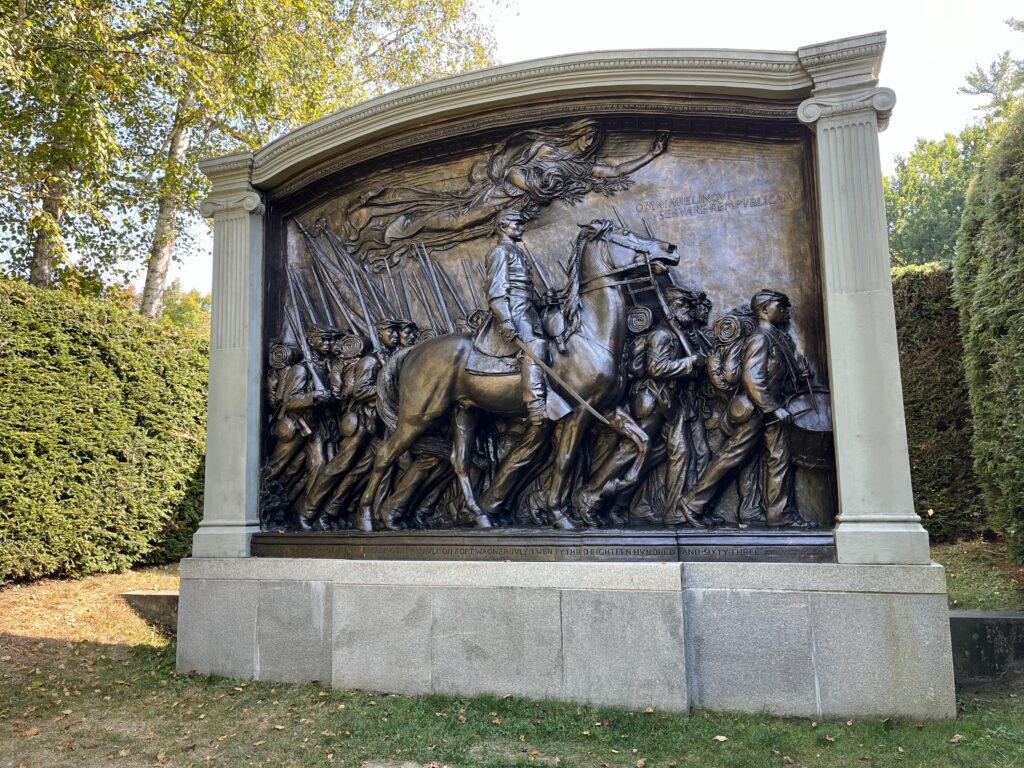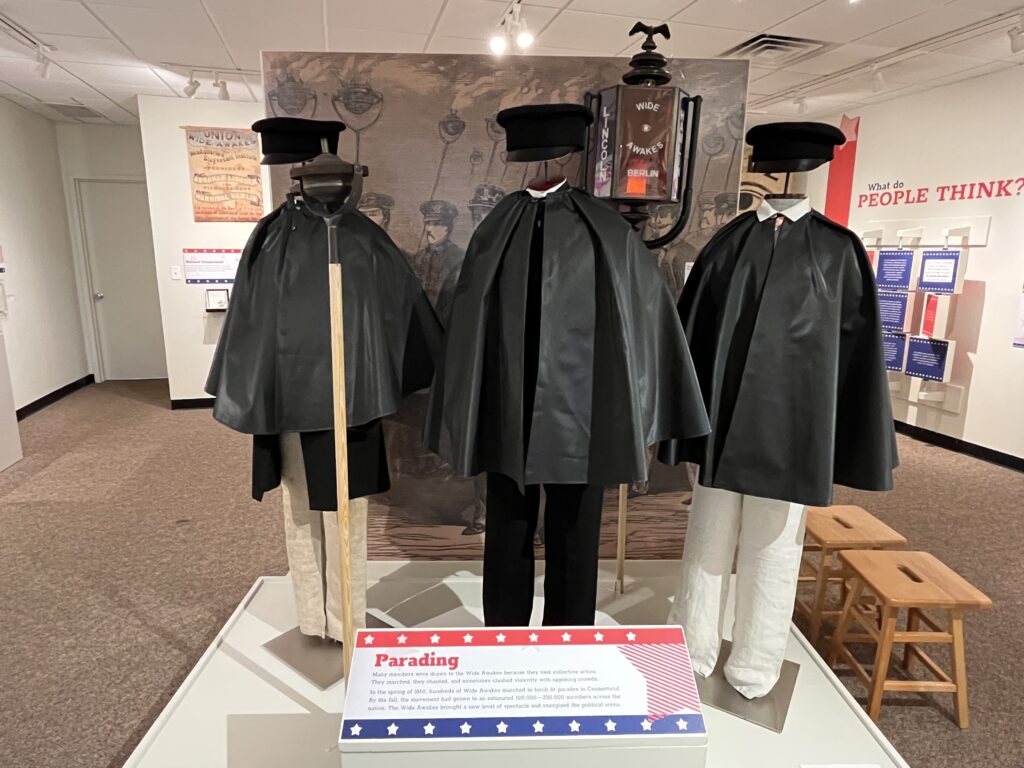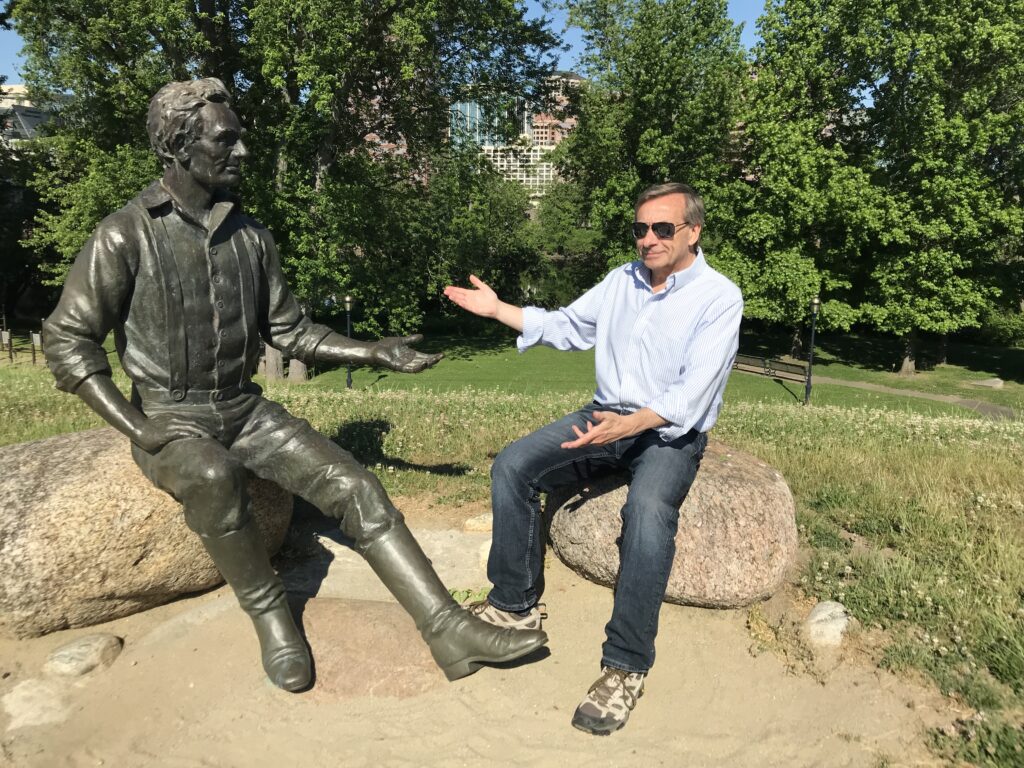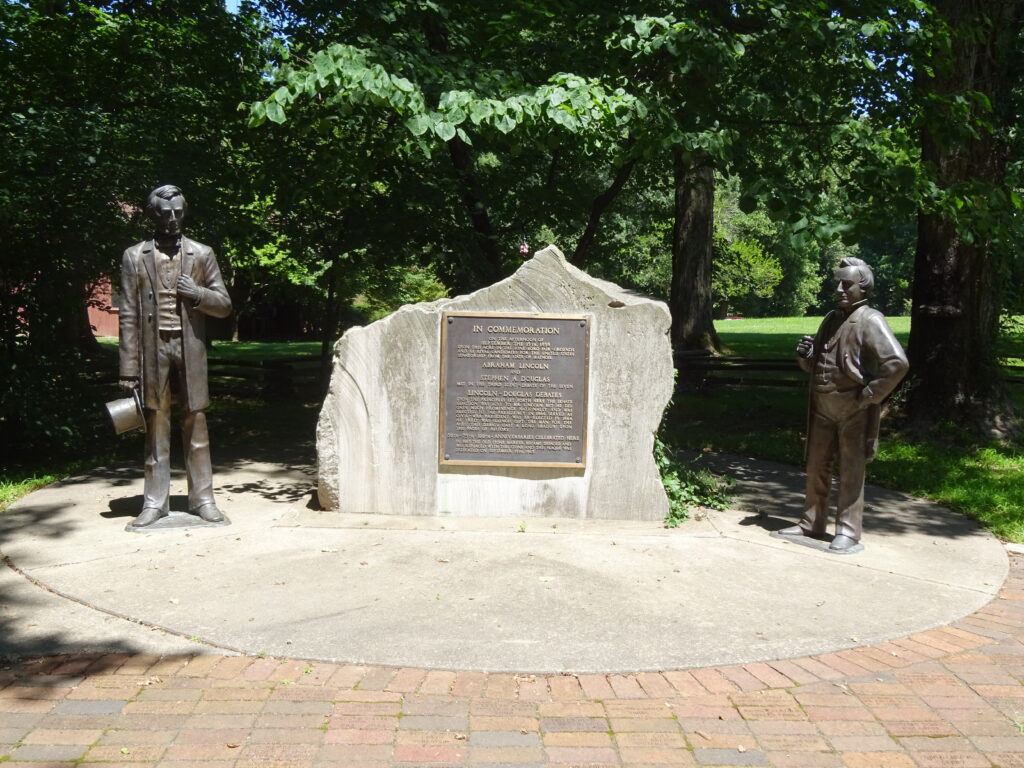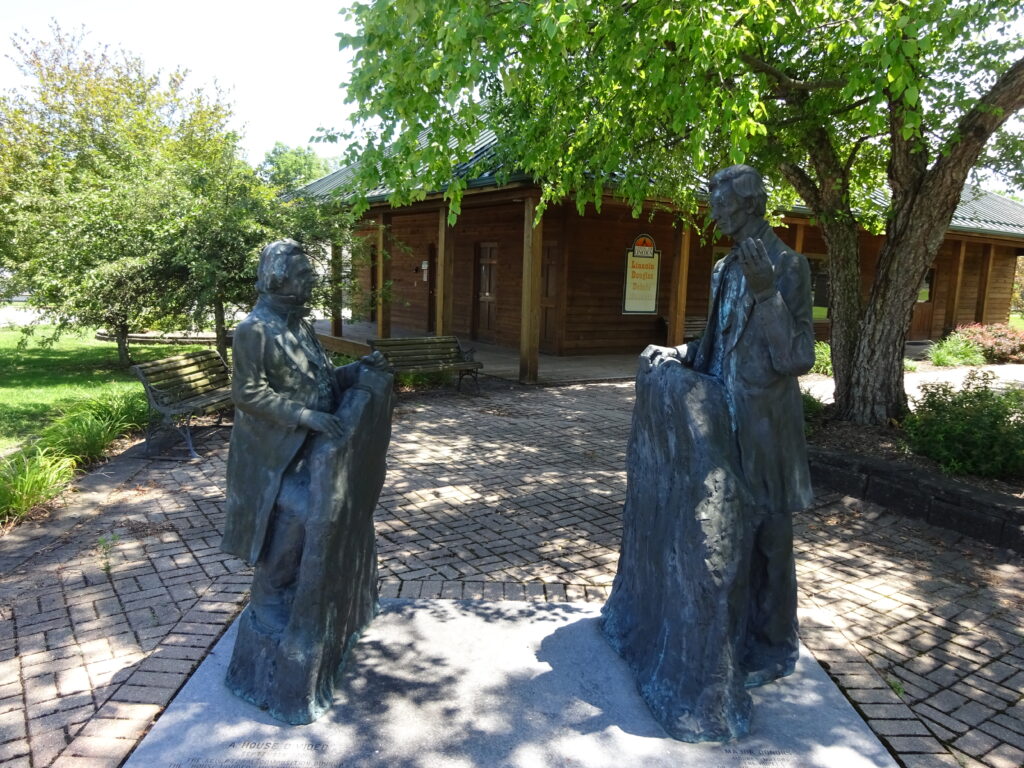 Abraham Lincoln’s “few appropriate remarks” at Gettysburg on November 19, 1863, which we now know as the Gettysburg Address (i.e., “Four score and seven years ago today…”) is a major milestone in Lincoln’s historical legacy. Less remembered is that Lincoln was weak and dizzy as he rose to speak, with the symptoms intensifying on the train back to Washington. Back pains developed, and by the fourth day of being bedridden he experienced a scarlet rash, which soon became vesicular. Lincoln had virus-induced smallpox, or at least a less virulent form called variola or varioloid. Over the next three weeks, lesions appeared and worsened, finally drying and peeling. He remained in bed recovering for weeks.
Abraham Lincoln’s “few appropriate remarks” at Gettysburg on November 19, 1863, which we now know as the Gettysburg Address (i.e., “Four score and seven years ago today…”) is a major milestone in Lincoln’s historical legacy. Less remembered is that Lincoln was weak and dizzy as he rose to speak, with the symptoms intensifying on the train back to Washington. Back pains developed, and by the fourth day of being bedridden he experienced a scarlet rash, which soon became vesicular. Lincoln had virus-induced smallpox, or at least a less virulent form called variola or varioloid. Over the next three weeks, lesions appeared and worsened, finally drying and peeling. He remained in bed recovering for weeks.
Lincoln likely had never received a vaccination for smallpox. The vaccine had limited availability and effectiveness at that time but was given to the Army of the Potomac to protect them from the epidemic that was plaguing major cities in the United States. Lincoln recovered, and to this day there is speculation that his case was more severe than his staff admitted. His free African American valet, William Johnson, was not so lucky. Contracting smallpox soon after Lincoln, Johnson passed away in late January. He had come with Lincoln from Springfield to Washington, and Lincoln had found him jobs in the White House and the Treasury Department. Lincoln arranged for Johnson’s family to receive his pay and for his burial at Arlington National Cemetery.
Two days after giving his famous Address, Lincoln continued the best he could to deal with pressing concerns (the Civil War waits for no illness). Illinois Representative Elihu Washburne related that “Old Abe has a well-developed case of varioloid. I was with him an hour and a half the other day, and we went over many things.” Lincoln also managed to converse with Indiana congressman Schuyler Colfax for more than an hour the evening of the 21st Postmaster General Mongomery Blair.
At one point, Lincoln, thinking about all the office seekers that constantly barraged him for jobs, he quips: “Now I have something I can give everybody.”
Back in the midst of the 2020 beginnings of the COVID pandemic, I wrote a post on this site that dug into the details of Lincoln’s case, which said in part:
As the Centers for Disease Control and Prevention (CDC) explains, smallpox, like coronavirus, is an infectious disease. Caused by two virus variants, Variola major and Variola minor, initial symptoms of smallpox include fever and vomiting, followed in extreme cases by sores in the mouth and a skin rash. As it worsens, large fluid-filled bumps appear on the skin, which result in characteristic and deforming scars. Like coronavirus, the smallpox virus was spread as people coughed or sneezed and droplets from their infected nose or mouth spread to other people. The smallpox scabs forming on the skin remained contagious until the last scab fell off. Coronavirus doesn’t form the scabs – it attacks the lung tissue rather than the skin – but both smallpox and coronavirus can be spread by residues left on surfaces from bedding and clothes to handrails and elevator buttons. Which is why it is so important during this coronavirus pandemic to practice social distancing, wash your hands often, and avoid touching your face.
Most scholars treated Lincoln’s case of variola as a mild case of smallpox, but some recent researchers suggest it was much more serious and that he could have died. In 2007, for example, two researchers reported that:
When Abraham Lincoln delivered the Gettysburg Address, he was weak and dizzy; his face had a ghastly colour. That evening on the train to Washington, DC, he was febrile and weak, and suffered severe headaches. The symptoms continued; back pains developed. On the fourth day of the illness, a widespread scarlet rash appeared that soon became vesicular. By the tenth day, the lesions itched and peeled. The illness lasted three weeks. The final diagnosis, a touch of varioloid, was an old name for smallpox that was later used in the 20th century to denote mild smallpox in a partially immune individual. It was unclear whether Lincoln had been immunized against smallpox. In that regard, this review suggests that Lincoln had unmodified smallpox and that Lincoln’s physicians tried to reassure the public that Lincoln was not seriously ill. Indeed, the successful conclusion of the Civil War and reunification of the country were dependent upon Lincoln’s presidency.
So perhaps Lincoln’s case was full-blown smallpox and not simply the milder variola. We’ll never know for sure, but at least we know he managed to not only keep his sense of humor while bedridden but also carry on the business of saving the Union.
[Photo Courtesy of Library of Congress, Reference Number: LC-USZC2-1913]

Lincoln: The Fire of Genius: How Abraham Lincoln’s Commitment to Science and Technology Helped Modernize America is available at booksellers nationwide.
Limited signed copies are available via this website. The book also listed on Goodreads, the database where I keep track of my reading. Click on the “Want to Read” button to put it on your reading list. Please leave a review on Goodreads and Amazon if you like the book.
You also follow my author page on Facebook.
David J. Kent is Immediate Past President of the Lincoln Group of DC and the author of Lincoln: The Fire of Genius: How Abraham Lincoln’s Commitment to Science and Technology Helped Modernize America and Lincoln: The Man Who Saved America.
His previous books include Tesla: The Wizard of Electricity andEdison: The Inventor of the Modern World and two specialty e-books: Nikola Tesla: Renewable Energy Ahead of Its Time and Abraham Lincoln and Nikola Tesla: Connected by Fate.



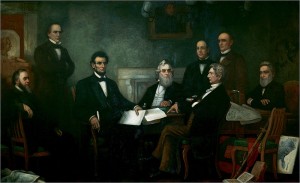 No doubt everyone in the Lincoln world has heard repeatedly about the document we’ve all come to know as the “blind memorandum.” But what about the “reveal party” when Lincoln showed his cabinet what he had written? That event happened on November 11, 1864.
No doubt everyone in the Lincoln world has heard repeatedly about the document we’ve all come to know as the “blind memorandum.” But what about the “reveal party” when Lincoln showed his cabinet what he had written? That event happened on November 11, 1864.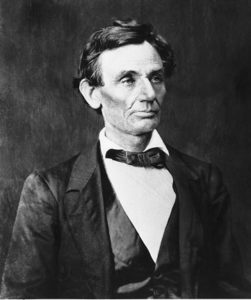 “I am not an accomplished lawyer,” Lincoln wrote in 1850 notes for a law lecture. Continuing in this unpretentious vein, he noted, “I find quite as much material for a lecture in those points wherein I have failed, as in those wherein I have been moderately successful.”
“I am not an accomplished lawyer,” Lincoln wrote in 1850 notes for a law lecture. Continuing in this unpretentious vein, he noted, “I find quite as much material for a lecture in those points wherein I have failed, as in those wherein I have been moderately successful.”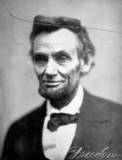 During the U.S. Civil War, there were some who advised Abraham Lincoln to postpone the 1864 election. He refused to do so, saying:
During the U.S. Civil War, there were some who advised Abraham Lincoln to postpone the 1864 election. He refused to do so, saying: Abraham Lincoln won reelection in 1864. Or so we remember. But the results may not be what they seem, and some of the states had questionable legitimacy. I’ll be discussing this topic in a new presentation scheduled for Tuesday, October 29, 2024.
Abraham Lincoln won reelection in 1864. Or so we remember. But the results may not be what they seem, and some of the states had questionable legitimacy. I’ll be discussing this topic in a new presentation scheduled for Tuesday, October 29, 2024.
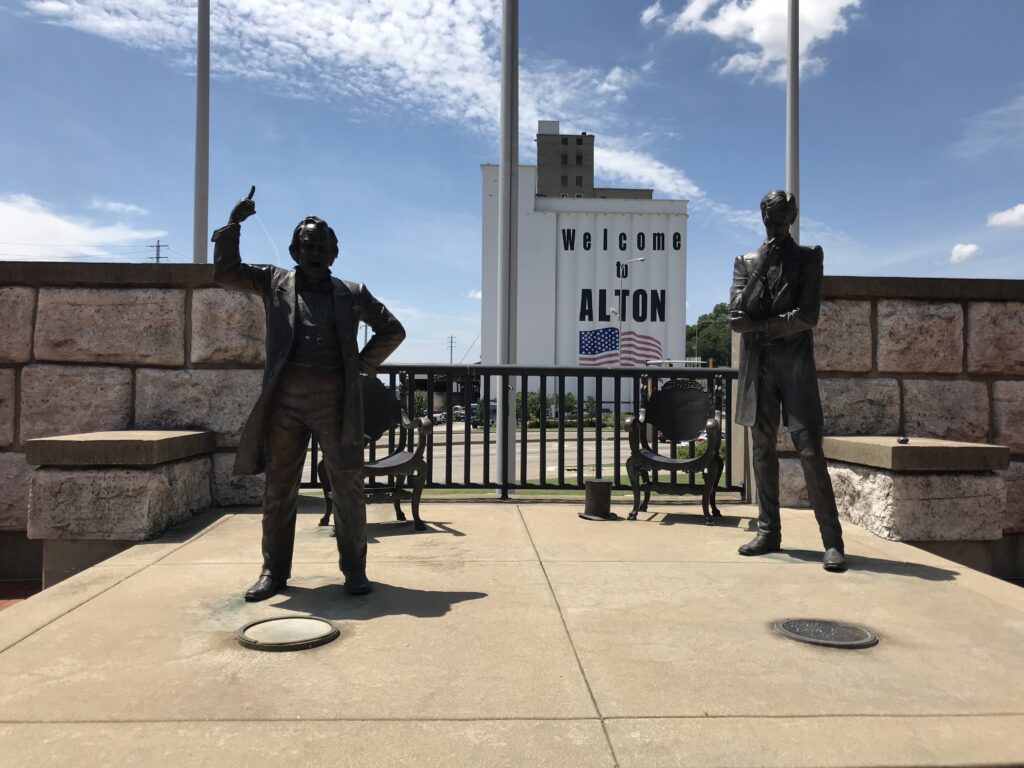
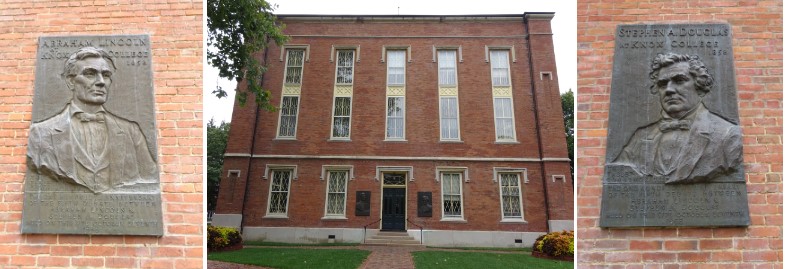 With the
With the 